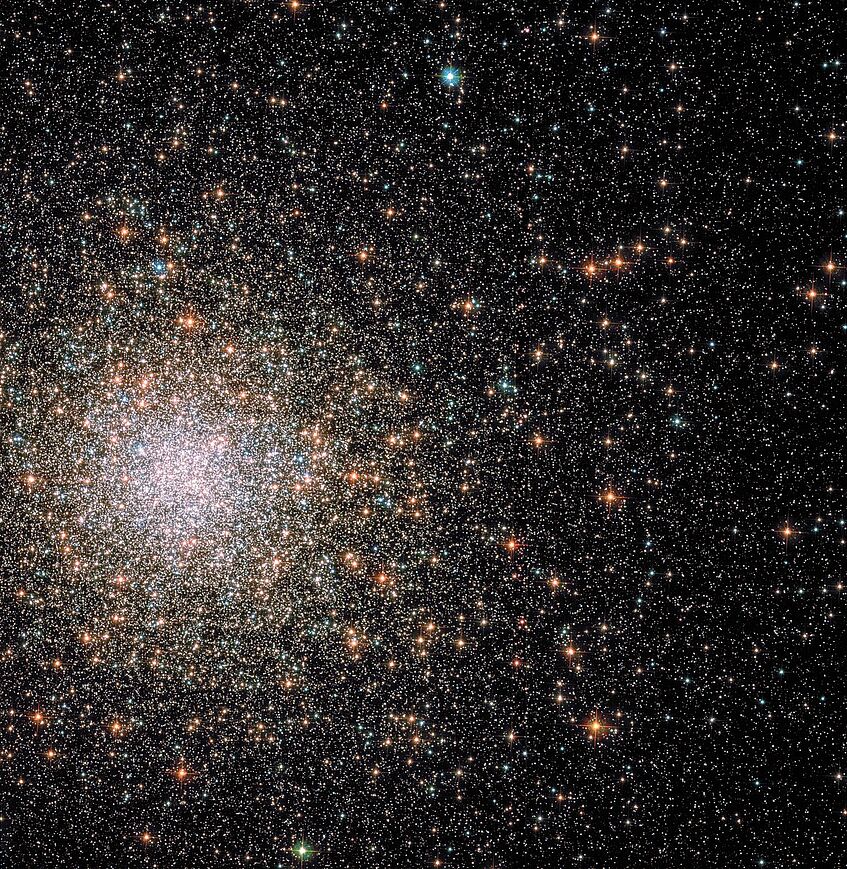Dynamics of Stellar Systems
Group Leader: Glenn van de Ven

Globular Cluster (Credit: ESA/Hubble & NASA, S. Anderson et al.)
Dynamics of Stellar Systems
The research in our group focuses on understanding the dynamical structure and evolution of stellar systems. In nearby galaxies and stellar clusters, we constrain their baryonic and dark matter distributions and look for the 'fossil records' of their formation by using realistic dynamical models that fit their photometric and spectroscopic observations in detail. The latter include integral-field spectroscopy, observed motions and properties of individual stars, as well as (strong) gravitational lensing observations. In addition, our group leads development of the publicly available DYNAMITE dynamical modeling software - an innovative tool for detailed recovery of the orbital structure and dynamical history of external galaxies.
Research focus
- Globular cluster formation/evolution: Our research group employs dynamical modelling to gather information about the internal dynamics of globular star clusters, with the aim of answering the many questions about them that are currently still unanswered: how do these dense stellar systems form? What is the origin of their multiple stellar populations? Do globular clusters host intermediate mass black holes?
- Co-evolution of black holes and galaxies: Many galaxies harbour supermassive black holes, but their exact formation and their scaling relation with global properties of their host galaxy are still mysterious. DYNAMITE, a sophisticated dynamical modelling software developed in the group, allows us to analyze IFU (integral field unit) and interferometric observations of galactic centres, offering an unprecedented chance to shed light on these mysteries.
- Recovery of dark matter distributions in galaxies: Dark matter is the dominant mass component of galaxies. Because it cannot be directly observed, its nature remains one of the biggest open questions in modern Astrophysics. We aim to answer this question by comparing kinematic measurements of stars, gas, globular clusters and planetary nebulae with dedicated dynamical models describing the distribution of visible and dark matter in nearby galaxies.
- Chemo-dynamical evolution of galaxies: In our Milky Way (and nearby galaxies), the combined chemistry, age and orbital motions of individual stars has provided a detailed picture of how its disk, bulge and halo evolved over time. Our group has a strong focus on developing techniques to recover a comparable picture of the buildup of more distant galaxies, where only integrated light observations are possible.
- Recovering accretion histories of galaxies: Galaxies like our Milky Way and more massive elliptical galaxies are expected to have had transformative past merger events in which they accrete other galaxies. Our group is leading innovative ways to uncover these past events (a key step to test cosmological theories), including our population-orbit superposition code (DYNAMITE), and chemical evolution models which link stellar population variations to past merger events.
- New techniques to analyse IFU data: With the advent of large field-of-view integral field unit (IFU) spectrographs we now have the ability to recover spatially resolved kinematics and stellar population properties over an entire galaxy. To maximise the information content that can be extracted from these data, our group is working on new techniques to better identify signatures of distinct galactic structures and stellar populations from the spectra.
